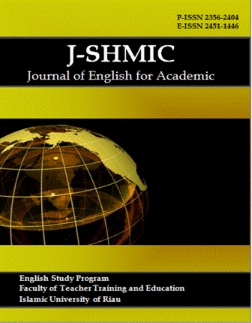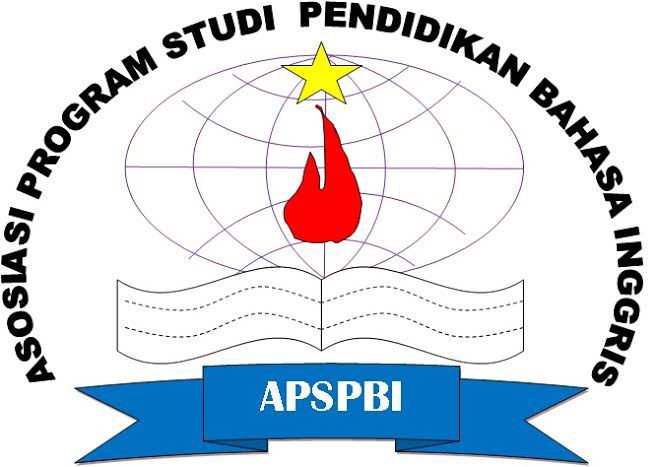The Relationship between Direct Language Learning Strategies and English Learning Proficiency at Senior High School Students
Keywords:
Language learning strategies, , English proficiencyAbstract
Learning strategies are applied by students to improve their studies. Suitable language learning strategies result in proficiency which is improved and greater self-confidence. Most researches observe the language learning strategies without dividing which affect more between direct and indirect strategy toward learning proficiency. Therefore, this research was conducted to find out whether the direct language learning strategies had a positive relationship and significant effect toward English learning proficiency on senior high school students. An ex-post-facto method with a correlational design was applied in this research. The population was 410 students at the eleventh grade of SMA Negeri 1 Baubau and selected 75 students as the sample using a simple random sampling technique. The instruments used were the SILL (Strategy Inventory for Language Learning) and the English proficiency test. The results of descriptive statistics indicate the compensation strategies were the most dominant learning strategy used by the eleventh-grade students with the mean score was 2.66. From the result of hypothesis testing, it was obtained the positive relationships and significant effect of those three kinds of strategies toward English proficiency on the eleventh-grade students. Besides, the memory strategies have the highest correction with the score of correlation is 0.756.
Downloads
References
Barruansyah, R. T. (2018). The correlation between learning styles, language learning strategies, and English learning motivation of the sixth semester students of STIBA Persada bunda. Journal of English for Academic, 5(1), 49–62. https://doi.org/https://doi.org/10.25299/jshmic.2018.vol5(1).1050
Brown, H. D. (2007). Principles of Language Learning and Teaching (5th ed.). Pearson Education. https://doi.org/10.2307/414380
Chamot, A. U. (2005). Language Learning Strategy Instruction: Current Issues and Research. Annual Review of Applied Linguistics, 25(2005), 112–130. https://doi.org/10.1017/S0267190505000061
Creswell, J. W. (2012). Educational Research (Fourth). Pearson Education.
Darsono, M. (2000). Belajar dan Pembelajaran. IKIP Press.
Djamarah, S. B. (2002). Psikologi Belajar. Rineka Cipta.
Dörnyei, Z., & Ryan, S. (2015). The Psychology of the Language Learner Revisited. Routledge.
Hornby, A. S. (2010). Oxford Advanced Learner’s Dictioanry. Oxford University Press.
Hughes, A. (2003). Testing for Language Teachers (2nd ed.). Cambridge University Press.
Lessard-Clouston, M. (1997). Language learning strategies: an overview for L2 teachers. The Internet TESL Journal.
Mattarima, K., & Hamdam, A. R. (2011). Understanding students’ learning strategies as an input context to design English classroom activities. International Journal of Psychological Studies, 3(2), 238–248. https://doi.org/10.5539/ijps.v3n2p238
Mills, G. E., & Gay, L. R. (2016). Educational Research: Competencies for Analysis and Applications (Eleventh (ed.)). Pearson Education Limited.
O’Malley, J. M., & Chamot, A. U. (1990). Learning Strategies in Second Language Acquisition. Cambridge University Press.
O’Neil, P., Moore, C., & Huot, B. (2009). A Guide To Collage Writing Assessment. Utah State University Press.
Oflaz, A. (2019). The effects of anxiety, shyness and language learning strategies on speaking skills and academic achievement. European Journal of Educational Research, 8(4), 999–1011. https://doi.org/10.12973/eu-jer.8.4.999
Oxford, R. L. (1990). Language Learning Strategies. Heinle & Heinle.
Patten, M. L., & Newhart, M. (2018). Understanding Research Methods (10th ed.). Routledge. https://doi.org/10.4324/9781315266312
Purpura, J. E. (1997). An analysis of the relationships between test takers’ cognitive and metacognitive strategy use and second language test performance. Language Learning, 47(2), 289–325. https://doi.org/10.1111/0023-8333.91997009
Richards, J. C., & Schmidt, R. (2010). Longman Dictioary of Language Teaching and Applied Linguistics (4th ed.). Pearson Education Limited.
Saricoban, A., & Saricaoglu, A. (2008). The effect of the relationship between learning and teaching strategies on academic achievement. Novitas-ROYAL, 2(2), 162–175.
Schmeck, R. R. (Ed.). (1988). Learning Strategies and Learning Styles. Springer Science+Business Media, LLC.
Shyr, W. J., Feng, H. Y., Zeng, L. W., Hsieh, Y. M., & Shih, C. Y. (2017). The relationship between language learning strategies and achievement goal orientations from Taiwanese engineering students in EFL learning. Eurasia Journal of Mathematics, Science and Technology Education, 13(10), 6431–6443. https://doi.org/10.12973/ejmste/76660
Slameto. (2010). Belajar & Faktor-Faktor yang Mempengaruhinya. Rineka Cipta.
Susetyo, B. (2015). Prosedur Penyusunan & Analisis Tes. Refika Aditama.
Suwanarak, K. (2019). Use of learning strategies and their effects on english language learning of thai adult learners. 3L: Language, Linguistics, Literature, 25(4), 99–120. https://doi.org/10.17576/3L-2019-2504-07
Taheri, H., Sadighi, F., Bagheri, M. S., & Bavali, M. (2020). Investigating the relationship between Iranian EFL learners’ use of language learning strategies and foreign language skills achievement. Cogent Arts and Humanities, 7(1), 1–38. https://doi.org/10.1080/23311983.2019.1710944
Tavakoli, H. (2012). A Dictionary of Research Methodology and Statistics in Applied Linguistics. Rahnama Press.
Wong, L. L. C., & Nunan, D. (2011). The learning styles and strategies of effective language learners. System, 39(2), 144–163. https://doi.org/10.1016/j.system.2011.05.004
Yustitiasari, H. (2020). The relationship between language learning strategies used by vocational students and level of proficiency. E-Journal of Linguistics, 14(1), 128–136.
Published
How to Cite
Issue
Section
This is an open-access article distributed under the terms of the Creative Commons Attribution-ShareAlike 4.0 International License which permits unrestricted use, distribution, and reproduction in any medium. Users are allowed to read, download, copy, distribute, search, or link to full-text articles in this journal without asking by giving appropriate credit, providing a link to the license, and indicating if changes were made. All of the remixes, transform, or build upon the material must distribute the contributions under the same license as the original.











